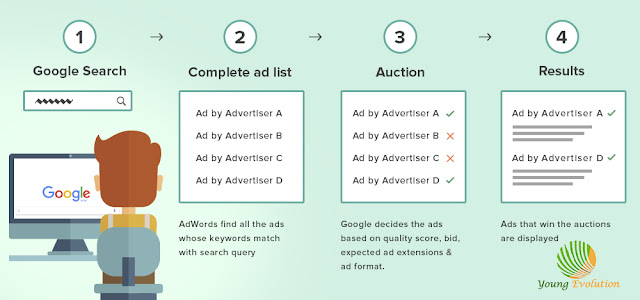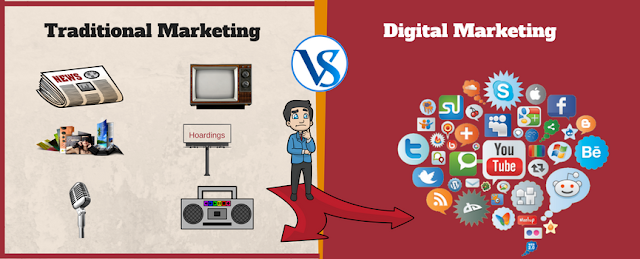What is Google Ad-Words?
When I was first requested to
run Google Ad-Words campaigns 2 years ago, I was having the same question in
my mind. It was my first job, and I had joined for Market Research. Google
Ads was a concept that appeared totally new.
I know…now it’s everywhere – Digital Marketing is now taught as a subject in MBA programs.
I know…now it’s everywhere – Digital Marketing is now taught as a subject in MBA programs.
Google AD-Words…Whaaaat?
My intention of writing this guide is
to help un-experienced beginners who are just starting with Ad-Words. Believe me
guys, even if you have learned all the theory, you’ll still need numerous
rounds of testing different things to get Ad-Words right and even then, there’ll
always be a room for perfection.
What is Google Ad-Words?
To give you the basic definition,
Google Ad-Words is an online paid advertising service established by Google to support
marketers reach their customers rapidly.
When someone searches on Google with a specific
term, say ‘Travel Packages’, Google would pitch a list of searches for you. But
if you look carefully, you will notice that the top and the bottom results are usually
ads.
But how
did Google come to know which ads to display?
Types of Ads in Google Ad-Words
Now, let us look at each of these ad types in detail.
A) Search ads
When a user searches on Google, the
list of ads that appear above the organic listing are called search
ads. For example, when a user searches for “travel packages”, the
search results will look like this: -
The ones marked “Ad” are ads.
Google studies several factors before determining
which ad to display first, as well as the sequence of ads that follow. Let’s take
a brief look at them: -
Significant Factors in Search Ads
1. Targeting: - Your ads will be shown in the geography that you select (you can go
as exact as the ZIP code)
2. Search Term and keyword: - What is being searched
for by the user + the keyword that you optimize the ad for.
3. Ad Copy Relevance: - Ads that appear for a precise search term should be relevant. A search
for jobs should not throw results for hotels.
4. Landing Page Experience: - How appropriate is the landing page to what the searcher wanted? Did
he get what he was looking for?
5. Conversion Rate: - This is measured by relevance, landing page quality, and experience.
6. Bids: - If 2 advertisers have
perfect ads and landing pages, the higher bid will get preferable over the
lower one.
We Can Also Run Following Ads
in Search Network Also.
1. Call-Only Ads: - This ad is available only on call permitted mobile devices. After
clicking on the ad, instead of taking you to your website, it makes a call
directly.
2. Dynamic Ads: - This ad type is best for businesses who have a good website, because the
content of the ad and landing pages are taken dynamically from the website.
They are very alike to text ads, excluding that no keywords are elaborated
here. e.g.: - a training institute is running dynamic search ads. A
user searches for “java courses”. Google displays a list of ads. But dynamic
ads would automatically substitute the ad headline with “java course”
and the ad text with the relevant website content and landing page”.
3. Mobile App Promotion: - These ads are appropriate for businesses with mobile applications.
The goal of this ad is to inspire users to download your app or take a wanted
action within the app.
Note: - All these ads are accessible
in the search network. Except for call-only ads, others are available in
display and video campaigns also. The ideas are same, but the platforms are
different.
B) Display ads
Have you ever noticed them? While you
are reading a post or viewing a video on a website, you see ads in a lot of
different places on the page, and in different sizes. These are display
ads.
Here the searcher is not obviously
looking for what is ad offers. But, based on a number of factors like keywords,
audience interest, managed placements etc., Google chooses to show them to you.
These display ads only appear on advertising-supported websites.
Below are some of the targeting principles, based on which Google chooses
the websites to place the banner ads.
1. Keywords: - The ads are presented based on the keywords that they are optimized for.
Let’s say the keyword for the ad is “Social Media Marketing”, then Google would
choose websites that have content on the same.
2. Placements: - They are nothing but the websites on which you want your ad to appear. Like:
- if you want to show your ad only on education related websites, then look for
advertising supported education sites and add them to your targeting.
3. Re-marketing: - This helps you re-join with your existing website visitors. You can mark the
visitors who have come to your website but have not taken any of the action.
4. Topic: - There are specific topics in Ad-Words, under which all websites are clustered.
It will be easier for the advertisers to select topics related to the
businesses. For example, websites related to hotels will be listed under the
topic ‘travel.’
C) Shopping Ads
If you are a retailer, this campaign type would make more intelligence
for you. This ad type increases traffic to your website and helps in producing
quality leads as well as growing your conversions.
Below is an example of how shopping ads appear on
the search network.
Requirements for Running Shopping Ads:
-
1. Setup an account with Google Merchant Center (It is a platform that helps
retailers to upload all their product listings in a specific format).
2. Create an account with Google Ad-Words & connect them together.
3. Submit updated product data every 30 days to Google Merchant Center.
Since both are linked together,
shopping ad takes all the product particulars from Google Merchant
Center, matches the search query and shows appropriate ads to the user.
D) Video Ads
This ad type lets the advertisers to run
video ads on YouTube & other Google Display Networks.
3 Chief Benefits of Running
Video Ads are: -
1. Better Targeting: - It has demographic, location, attention, keyword and device targeting
which helps you grasp the right audience on YouTube and Google Display Network.
2. More Reach: - From January 2017, YouTube is the 3rd most visited
website and has more than 30 million visitors every day. These ads are also
available on Google Display Network. This means that you have access to a broader
audience.
3. Measurable: - Unlike advertising on TV, YouTube ads let you know all the necessary
metrics like: - views, view rate, clicks, reach and frequency, engagement,
performance etc.
Example: - video ad from
Grammarly
E) Universal App Campaign
This ad campaign is best for businesses
with a mobile application. The advertiser can promote the mobile app
across search, play store, display & you-tube. Ad-Words uses ad
text concepts right from your app store programs. All you need to provide
some text, a budget and a starting bid. Also, don’t forget to set
languages and positions for the ad.
Financial institution,
KCB group, used Universal App Campaign to increase awareness about
KCB mobile banking app.
So, now you know
what is Google Ad-Words, and the types of ads that are accessible for you to
run. My next post will give you compact reasons that why to start with
Google ads right away and to expand your ROI using them. For any query you can
always ask in comment section below.











This is very helpful post thank you for the information.
ReplyDeleteWhat Is Google Ad-Words? >>>>> Download Now
Delete>>>>> Download Full
What Is Google Ad-Words? >>>>> Download LINK
>>>>> Download Now
What Is Google Ad-Words? >>>>> Download Full
>>>>> Download LINK c7
Welcome
ReplyDeleteWhat Is Google Ad-Words? >>>>> Download Now
ReplyDelete>>>>> Download Full
What Is Google Ad-Words? >>>>> Download LINK
>>>>> Download Now
What Is Google Ad-Words? >>>>> Download Full
>>>>> Download LINK m5